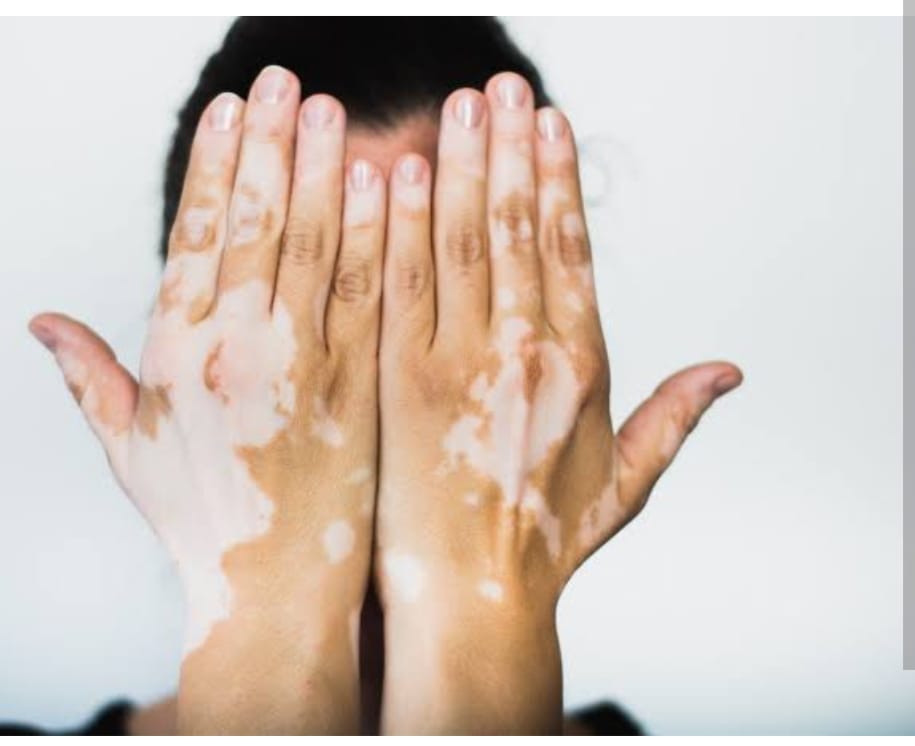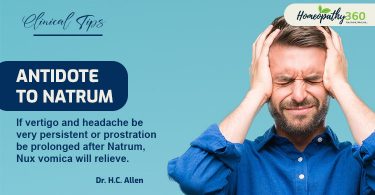
Abstract : Vitiligo is a chronic disease characterised by loss of skin colour in patches because of disappearance of melanocytes in the affected area. This article deals with an overview of Vitiligo, including its etiological factors, pathogenesis, clinical patterns, clinical features and diagnosis along with homoeopathic management of the same, covering all three aspects namely organon, repertory and materia medica.
Keywords:
Vitiligo, autoimmune, genetic, homoeopathy.
Abbreviations : Immunoglobulin (Ig), reactive oxygen species (ROS), hydrogen peroxide (H2O2)
INTRODUCTION : Vitiligo is a common form of localized depigmentation. It is an acquired condition resulting from the progressive loss of melanocyte. It is characterised by milky white sharply demarcated macules.
Vitiligo is a common pigmentary disorder of the skin with a worldwide incidence of 1%. Some dermatological outpatient records show the incidence of vitiligo to be 3%-4% in India although an incidence as high as 8.8% has also been reported. In the Indian states of Gujrat & Rajasthan the prevalence of vitiligo is very high .
Vitiligo has a pronounced impact on the physical and mental health of patients, including loss of skin photoprotection, compromised cutaneous immunity, and an appreciable reduction in quality of life2.The disease affects both genders equally, it can appear at any age. The prevalence of vitiligo has been estimated between 0.5% to 1.13% in India.Vitiligo affects 1% of the general population, the risk of a patient’s sibling developing the disease is 6%, and for an identical twin 23% 3.
Site : Symptoms of vitiligo can appear anywhere on the skin of your body. The most common places to have symptoms of vitiligo include on your
- Face
- Arms
- Feet
- Hands
- There are two major types of vitiligo:
- Nonsegmental Vitiligo The most common type of vitiligo, with pale skin patches usually appearing on both sides of the body. The first signs may show up on hands, fingertips, wrists, around the eyes or mouth, or on the feet. Nonsegmental vitiligo is also called bilateral or generalized vitiligo or vitiligo vulgaris, according to an article published in September 2016 in the journal F1000 Research.
- Segmental Vitiligo For this type, white patches often appear on just one side of the body, such as one arm or one leg instead of both. Loss of hair color is common. Segmented vitiligo can begin early in life. It may spread rapidly for six months to two years, then stop progressing. In rare , this form of vitiligo may become active again years later. About 5 to 16 percent of vitiligo cases are segmental vitiligo.
- Other types of vitiligo :- Mucosal: Mucosal vitiligo affects mucous membranes of your mouth and/or genitals.
- Focal: Focal vitiligo is a rare type where the macules develop in a small area and don’t spread in a certain pattern within one to two years.
- Trichome: This type causes a bullseye with a white or colorless center, then an area of lighter pigmentation, and an area of your natural skin tone.
- Universal: This rare type of vitiligo causes more than 80% of your skin to not have pigment.
- signs and symptoms of vitiligo :- Spots and patches of lighter skin
- Patches turn white
- Lighter patches inside your mouth or nose
- Patches itch
- Patches and spots sunburn easily
- Hair turns white or gray
- Eyelash, eyebrow, or section of hair on the scalp turns white.
Diagnosis – Diagnosis of vitiligo is usually clinical.
- Lecotrachia on affected area.
Presence of Kobner’s phenomenon-New lesion of vitiligo at sites of trauma, appearing as linear depigmented macules.
- Presence of depigmented macules (milky-white) with scalloped borders.
Differential diagnosis5– Nevus achromicus, Pityriasis alba, Tinea versicol
HOMOEOPATHIC VIEWPOINT
Miasmatic diagnosis- Complete absence or diminution of melanocytes from the birth is due to syphilitic miasm and cure by anti-syphilitic medicine. Case with the function of melanocytes is defective it represent sycotic miasm. Secondary depigmentation during the cause of illness due to psora, sycosis and syphilis or an combination of two or three of them.
Homoeopathic remedies for vitiligo :-
1.Arsenicum album :- Itching,burning, swellings; śdema, eruption, papular, dry, rough, scaly; worse cold and scratching. Worse, wet weather, after midnight; Better from heat.
2.Arsenicum sulphuratum flavum :- Skin chafed about genitals. Leucoderma and squamous syphilides.
3.Calcarea carbonica :- Unhealthy; readily ulcerating; flaccid. Small wounds do not heal readily. Glands swollen. Nettle rash; better in cold air. Warts on face and hands. Petechial eruptions. Chilblains. Boils.
4.Crotalus horridus :- Swelling and discoloration, skin tense and shows every tint of color, with excruciating pain. Vesication. Sallow. Yellow color of the whole body. Great sensitiveness of skin of right half of body.
5.Hydrocotyle asiatica :- Dry eruptions. Great thickening of epidermoid layer and exfoliation of scales. Circular spots, with scaly edges. Intolerable itching, especially of soles. Profuse sweat. Syphilitic affections. Acne. Leprosy. Elephantiasis. Lupus nonexedens.
6 .Natrium muriaticum :- Greasy, oily, especially on hairy parts. Dry eruptions, especially over margin of hairy scalp and bends of joints. Crusty eruptions in bends of limbs, margin of scalp.
Discussion and conclusion- Vitiligo is an autoimmune disease. It is an external expression on the skin due to internal dysfunction at the level of immune system. Homoeopathic medicine are selected on basis of individualistic approach after the case taking in every case of vitiligo which is based on affected area of vitiligo, spread of vitiligo, emotional, past history, family history, etc. There is no single specific remedy for all case of vitiligo. Homoeopathic medicine controls the spread of vitiligo by stimulating the skin pigments to generate melanin and help to regain the normal skin color.
References:
1.Davidson S. Principles & Practice of Medicine.22nd ed.
Philadelphia: Elsevier; 2014
2.Khanna N. Illustrated synopsis of Dermatology and
Sexually Transmitted Diseases. 3rd ed. Delhi: Elsevier; 2009.
3.Faria AR, Tarlé RG, Dellatorre G, Mira MT, Castro CC. Vitiligo–Part 2–classification, histopathology and treatment. An Bras Dermatol. 2014;89(5):784-790. doi:10.1590/abd1806-4841.20142717.
4. Pate RP. Chronic miasms in homoeopathy & their cure with classification of their rubrics/ symptoms in Dr.kent’s repertory (Repertory of miasms).kottayam, kerala: Hahnemann homoeopathic Pharmacy; 1996
5.Allen JH. The Chronic Miasms: Psora and Pseudopsora, Vol. I&II Reprint ed new Delhi: B Jain Publishers Pvt. Ltd; 2006.
6.Benerjee SK. Miasmatic Prescribing. 2nd extended ed. New
Delhi: B Jain PublishersPvt.Ltd; 2011
10.Schroyens F. Augmented Clinical Synthesis. 9.1 ed. New Delhi: B.JainPublishers(P)Ltd; 2011.
7.Kent J.T, Repertory of the Homoeopathic MateriaMedica, New Delhi: B.JainPublishers(P)Ltd; 2015.
8 Murphy R. Lotus MateriaMedica, 2nd revised edition. New Delhi: B.JainPublishers(P) Ltd; 2006.
9. Boger CM. BogerBoenninghausen’s Characteristics & Repertory. New Delhi: B Jain Publishers(P)Ltd; 2015.
10.Boericke W. Pocket Manual of Homoeopathic MateriaMedica and Repertory. 9th Edition. New Delhi: B.
Jain Publishers (P) Ltd; 2009.
About Author:
Dr Shivani Dhoke, MD Scholar Batch
2021-22, Department of Practice of Medicine, Government Homoeopathic Medical College and Hospital Bhopal, Madhya Pradesh.



